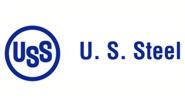Market Segment

March 27, 2014
EAFs for USS?
Written by Sandy Williams
US Steel is considering replacing additional blast furnaces with electric arc furnaces (EAF) according to President and CEO Mario Longhi.
In January, US Steel announced it was seeking permits to replace the blast furnace at Fairfield, Ala., with an EAF, a process that would take approximately three years from application to completion. The EAF would have an annual steel production capability of 1.1 million net tons as compared to 2.1 million tons for the current blast furnace but would increase flexibility and efficiency said Longhi.
“We are moving ahead with the first one,” said Longhi in remarks to Reuters on Tuesday. “And there is a lot of analysis going on, given the fact that we have plenty of blast furnaces, to see where, if, when the next one could be replaced by another electric arc furnace.”
Longhi said the decision to replace a furnace would depend on the age of the blast furnace and when it would be due for a “massive reline” that can cost $100 million or more.
Natural gas-fired electric arc furnaces can process steel scrap instead of iron ore, which can reduce transportation costs for raw materials and the risks of coal and iron ore price fluctuation.
In April of 2013, US Steel announced it was exploring the possibility of a joint venture with Republic Steel to construct a direct reduced iron (DRI) facility. Although those plans are currently on hold according to Republic Steel spokesperson Mark Huemme, if it were to proceed, the project could potentially provide feed stock for Republic’s new electric arc furnace as well as the Fairfield facility.
US Steel has concluded that the iron ore at its Minnesota ore operations is suitable for production of DRI quality pellets.
“We’ve concluded the testing phase of our work at Minntac and have determined that with the appropriate investment in process and facility improvements we can produce DRI quality pellets and we’ve advanced to the engineering phase in order to define a specific timeline and investment requires to commence production of DRI quality pellets,” said Longhi in the Q3 earnings call.
Currently, US Steel’s Minntac and Keetac taconite mines together provide 22 million net tons of iron ore pellets per year.







